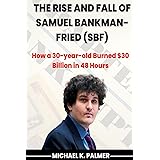The cryptocurrency market, currently standing at an impressive $4.03 trillion in total capitalization, recently witnessed a significant event: the Federal Reserve’s first rate cut of 2025. Many investors, particularly those new to market cycles, might be wondering why an immediate, dramatic pump hasn’t occurred. As discussed in the accompanying video, this seemingly counterintuitive reaction is entirely normal and, in fact, signals a more profound, underlying shift towards bullish market conditions.
Understanding the impact of a Fed rate cut on the broader financial landscape, including the crypto market, is crucial for long-term investors. While short-term fluctuations can be disconcerting, the historical data and expert analysis, such as those shared by Tom Lee, paint a compelling picture of what to expect in the coming months. This market behavior, though initially puzzling, aligns with previous cycles and monetary policy effects, setting the stage for substantial growth.
Understanding the Recent Fed Rate Cut and Crypto’s Reaction
The Federal Reserve’s decision to implement a 25 basis point (BPS) rate cut often sparks immediate speculation and varied market responses. Historically, initial market reactions to such announcements can be mixed, sometimes even leading to a “sell-the-news” event. Investors often price in anticipated moves, so if the actual decision matches expectations without surprising dovishness, an immediate surge may not materialize.
However, the underlying mechanics of a rate cut are undeniably beneficial for risk assets like cryptocurrency. Lowering interest rates makes borrowing money cheaper for individuals and corporations alike. This crucial policy shift directly injects more capital and liquidity into the financial system, stimulating economic activity and investment across various sectors.
The Power of “Easier Money” for Crypto
A Fed rate cut fundamentally creates an environment of “easier money.” When borrowing costs decrease by 0.25%, for example, it becomes more attractive for businesses to expand and for investors to seek higher returns in riskier assets. This increased availability of capital directly leads to a rise in the M2 money supply, which is a broad measure of global liquidity. In essence, more money starts flowing through the economy, inevitably finding its way into investment vehicles.
For the crypto market, this influx of liquidity is particularly potent. As traditional investment opportunities may offer lower returns in a reduced interest rate environment, investors often rotate capital into higher-growth potential assets. This search for yield, coupled with the overall increase in available funds, provides a strong tailwind for digital assets, paving the way for sustained upward momentum.
Navigating Market Sentiment Amidst Bullish Signals
Despite these fundamentally bullish developments, market sentiment can often lag behind economic realities, creating periods of investor confusion. The Fear and Greed Index, for instance, currently hovers around 48, indicating a neutral stance where market participants are unsure whether to be bullish or bearish. This contrasts sharply with September 2024, when the index plunged to extreme fear levels of 25-26, just before a significant market rally.
This discrepancy between objective market conditions and prevailing sentiment is a common feature of financial cycles. Many investors base their decisions on immediate price action, overlooking the delayed impact of monetary policy changes. Recognizing this psychological lag is vital; what feels like uncertainty today might be a critical precursor to strong gains tomorrow, echoing past patterns observed in the market.
Why Current Altcoin Season Readings Can Be Misleading
The Altcoin Season Index currently registers a high 76 out of 100, a figure that typically suggests widespread altcoin outperformance. Yet, many long-term altcoin holders might not be experiencing the dramatic gains they anticipate. This apparent contradiction can be attributed to the nature of recent market activity, where much of the pumping is concentrated in newly launched or very fresh projects.
These new launches often attract significant capital and hype, making them easier to move and quickly driving up their market capitalization. Consequently, the Altcoin Season Index can be skewed by these outlier performances, rather than reflecting a broad, sustained surge across established altcoins. While liquidity is indeed flowing, it’s frequently migrating from one fresh asset to another, rather than uniformly lifting the entire altcoin market in a significant way.
Tom Lee’s Bullish Prediction: A Historical Perspective
Fundstrat Global Advisors’ Tom Lee offers a powerful historical perspective on the current market situation. He highlights that “every time the Fed cut near all-time highs, markets gained over the next 12 months, 100% of the time.” This statistic, drawn from Carson Research, provides a compelling argument for a bullish outlook, suggesting that current market conditions are historically aligned for significant growth.
The period following September 2024 offers a recent, tangible example of this phenomenon. Despite widespread bearish sentiment at the time, the market bottomed out in August, formed a higher low in September, and then embarked on an impressive rally through November and December. This precedent underscores the importance of focusing on underlying fundamentals and historical patterns rather than being swayed by short-term sentiment.
Beyond Rates: Green Lights for Corporate Expansion
Tom Lee’s analysis extends beyond mere interest rate adjustments, portraying Fed rate cuts as a “green light” for corporate America. For 31 months, the ISM (Institute for Supply Management) index, a key economic indicator, has remained below 50, signifying contraction or caution in manufacturing activity. This sustained period of restraint was largely due to companies operating with prudence, uncertain about inflation and future monetary policy.
An easing cycle by the Fed signals greater confidence, encouraging corporations to expand operations, invest in new initiatives, and rejuvenate the labor market. Furthermore, Lee points to powerful secular trends like Artificial Intelligence (AI) driving productivity gains and Wall Street building on blockchain technology. These forces, combined with lower borrowing costs, are expected to foster stronger economic growth in 2025 without triggering inflationary pressures, ultimately benefiting overall market performance and corporate profits.
XRP’s Path Forward: Technical Analysis and Bullish Outlook
Focusing specifically on XRP, its current price action, while showing some sell-off, is still considered to be within a bullish structure. Despite trading under $3 at present, a crucial support level around $2.95 cents is identified as a potential turning point. The technical setup on the weekly chart remains strong, requiring a clear break above $3.20 to confirm a significant upward trajectory.
Comparing the current structure to XRP’s performance in late 2024 offers further bullish insights. After a brief dip and consolidation following the September 2024 rate cut, XRP eventually found strong support, established a double bottom, and then surged from around 64 cents to 75 cents, ultimately reaching $3.40 by mid-January. This historical pattern suggests that patience during periods of consolidation can precede explosive growth, potentially leading XRP to push above $4 and establish a new cycle top.
Why Patience is Key for XRP and Altcoin Investors
The market’s reaction to a Fed rate cut is seldom immediate; it functions more as a lagging indicator, with its full effects unfolding over weeks or even months. As the video highlights, this delayed impact is a critical factor often overlooked by those expecting instant pumps. While stocks and gold have already seen significant pushes to new all-time highs, the crypto market is typically a few steps behind, consolidating before its major breakout.
The overarching market structure for altcoins, including XRP, remains robust with higher lows forming over time. This foundational strength, combined with easier money policies and corporate expansion initiatives, sets the stage for substantial rallies. Investors who maintain a focused, long-term perspective and avoid being swayed by short-term chop are likely to be in the strongest positions to capitalize on these impending moves, ensuring they do not miss out on the largest potential gains as the market inevitably pushes higher.







